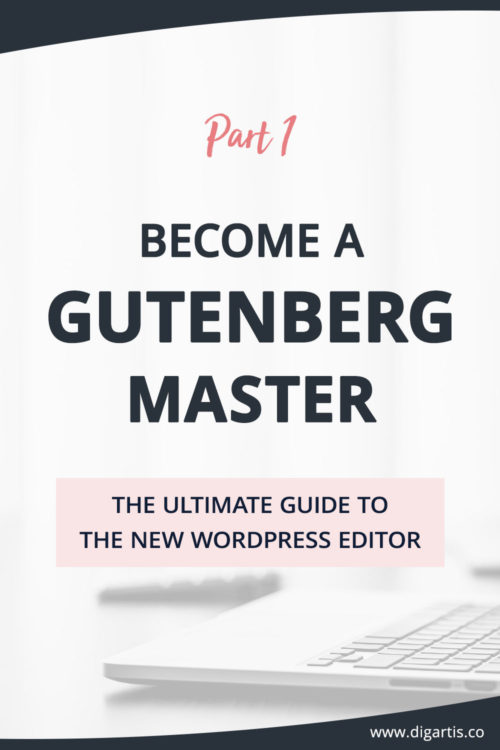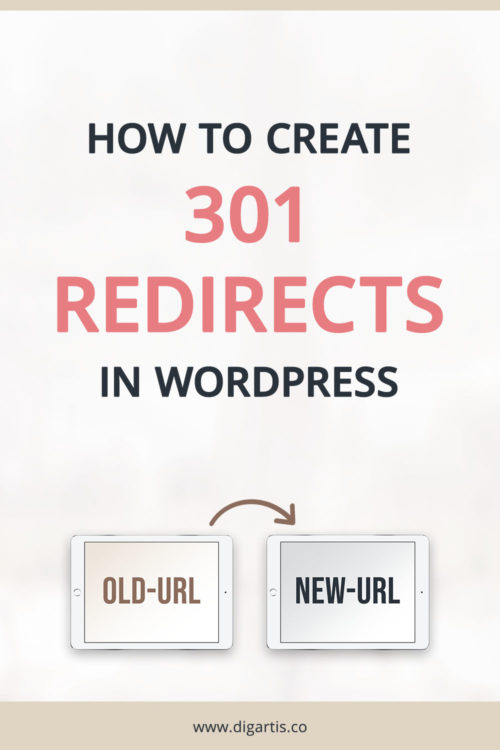When you start blogging it can be really overwhelming. You begin to realize just how much you still don’t know. To help make it just a bit easier for you, we’ve put together this list of blogging terms for beginners. This might not be a post that you want to sit and read from start to finish, it’s probably more a save-for-later kind of thing. So be sure to bookmark this page for later and check back when you come across a word you’re not sure about.

A
Above the fold – the part of the screen that is immediately visible before scrolling down the page.
Affiliate Marketing – an advertising model where you find a product or service you like from other companies or individuals, promote it to your readers and earn a commission for each sale that comes directly through a link from your site.
Alt text/alternative text/alt attribute – a description of an image that can be added to its HTML tag. It is used when the image cannot be displayed, in which case the Alt text is shown instead.
Avatar – an image that represents you on your blog, forums, online accounts, etc.
B
Backlink (inbound link) – a link that points back to your site from another website.
Backup – a copy of your blog as a precaution in case the original data or data files are lost or destroyed.
Bounce Rate – the percentage of people who arrived on your website and only viewed one page before leaving.
Breadcrumbs – a hierarchical navigation menu that tells users and search engines where they are on a website relative to the homepage.
Browser – a software application that lets you visit web pages on the Internet, e.g. Google Chrome, Firefox, Safari, and Internet Explorer.
C
Cache – a space in memory or on disk where a browser temporarily stores certain data from recently visited web pages to speed up page load. When you revisit those pages, the browser uses this stored data instead of downloading it again.
CAPTCHA – letters or numbers you’re sometimes required to enter before submitting a comment, password or other data on a website, designed to ensure the response is created by a human and not a computer.
Category – a way to group related posts into topics.
Child theme – a theme that inherits the functionality and styling of another theme, called parent theme, and allows you to modify it.
CMS (Content Management System) – a software application that allows you to create, edit, and publish content (e.g. WordPress, SquareSpace, or Tumblr).
Comments – replies that readers leave on a blog post.
Contact Form – a form on a website that allows users to get in touch with the site owner.
Content Upgrade – a bonus content given to your readers in exchange for their email address.
Contributor – a person who adds content to your blog, but is not the owner
Conversion rate – the number of website visitors who have completed some type of action, such as signing up for a newsletter, or purchasing an e-book, divided by the total number of visitors
Cookies – small text files placed on your computer by a web server when you view sites online. They’re used to store data about you and your preferences so that a web server doesn’t have to repeatedly request this information.
Cornerstone Content – the most important, well-written, and explanatory articles that reflect your business and communicate your mission.
cPanel – a web-hosting control panel that provides an interface and tools for the user to manage the hosting of their blog or website.
CSS (Cascading Style Sheet) – a language designed to style HTML elements. With CSS you can change things like colors, fonts, buttons and more.
D
Dashboard – in WordPress, this is the first screen you see when you log into the administration area of your blog.
Do-Follow Link – a link that allows search engines to crawl them, boosts the page rank of the linked-to site and helps it go higher in the search results.
Domain Name – a unique name for a particular website, e.g. the domain name of https://www.digartis.co is digartis.co
Draft – an unpublished blog post
E
Email Marketing Service Provider – a company that you use to send out email communication with your readers (e.g. MailChimp or ConvertKit)
Evergreen Content – a post that doesn’t date quickly, and is therefore as relevant today as it will be in years to come
Excerpt – a shortened version of the blog post content that is usually found under each post title in a blog or archive page.
F
Favicon – a small image that represents your website, displayed in the address bar of your web browser or in a list of favorites.
Featured Image (Post Thumbnail) – an image that is chosen as the representative image for posts or pages.
Footer – the bottom area of your website.
G
Ghost referral spam – bots that bypass your site and hit the Google Analytics servers directly. There is no traffic on your site, but Google Analytics counts sessions and page views.
Gravatar – an image that follows you from site to site appearing beside your name when you do things like comment or post on a blog
Guest Blogging – writing and publishing an article on someone else’s website or blog, in exchange for receiving a link to your own blog and an opportunity to promote your own name and blog.
H
Header – the top area of a website. It typically contains a website’s name or logo and a navigation menu.
Homepage – a website’s main page.
Host (also Web host) – a company that provides space for your website on its server, so that other computers around the world can access it.
HTML (Hypertext Markup Language) – the language for describing the structure of Web pages, for example paragraphs, lists, headers, and so on.
Hyperlink – text or image that you can click on to jump to a new web page or a new section within the current page
I
Inbound link – a link that points back to your site from another Web site.
Indexing – the process of adding web pages to Google search listing (or any other search engine)
Internal link – a link that points to another section or page of the same website
K
Keyword – a word or phrase that tells search engines what the content on your page or post is about.
L
Landing page – a web page that you will “land” on when you click a certain link, created specifically for the purposes of a marketing or advertising campaign.
Linky / Linky Party – an event when a host blog offers other bloggers the opportunity to post their own projects on the hosting website, with a photo and a link back to their site.
Long-tail Keywords – keywords that are more specific (and often longer). They have a lower search volume and in most cases low competition, so they are likely to deliver a higher return from visitors.
M
Media Kit – a page or a document that outlines the key facts and statistics about your blog. Generally, it is given to potential advertisers or brands that you want to collaborate with.
META Description – a short description of a particular web page. It appears under your page’s URL in the search results.
META Tags – snippets of text that describe a page’s content. They don’t appear on the page itself, but only in the page’s code, and make it easier for search engines to determine what your content is about.
N
Navigation Menu – a set of buttons or links in a row or column that help you access different areas on a website.
No-follow link – a link with a special string of code attached to it, that prevents links from being crawled by search engines. As a result, no SEO credit gets passed from your website to the site you are linking to.
O
Opt-in – an incentive such as a checklist, cheat sheet, or eBook you give to your readers in return for their email address.
Organic Search – traffic that arrives at your site through a search engine result.
P
Page – a static entry, which is not date-related. Information displayed on a page doesn’t change, or doesn’t change often (e.g. About or Contact Us section of a website).
Parent theme – a theme that is declared a parent because of the existence of another theme, called child theme. A Parent theme passes along all its functionality, features and style to the child theme.
Permalink – a permanent URL (web address) of a particular blog post or page on your site
PHP – a programming language in which WordPress is written
Pingback – a special type of comment that’s created when you link to another blog post, as long as the other blog is set to accept pingbacks.
Platform – see CMS
Plugin – a piece of software that extends the functionality of your website.
Post – a piece of writing or another item of content published on a blog.
R
Redirect – a way to send both users and search engines to a different URL from the one they originally requested
RSS (Really Simple Syndication) – a technology that allows you to keep track of your favorite websites without having to manually visit the website each time.
S
SEO (Search Engine Optimization) – a technique used to improve the visibility of your website within organic search results in order to increase site traffic.
Sidebar – an area of your website’s layout that is either on the left or on the right side, used for displaying information other than the main content of the web page
Sitemap – a file where you can list the web pages of your site to tell Google and other search engines about the organization of your site content. Search engine web crawlers like Googlebot read this file to more intelligently crawl your site.
Slug – the part of the URL that refers to that specific page, e.g. slug of https://www.digartis.co/services/ is simply ‘services’.
Spam – comments or emails that are unsolicited and usually contain excessive links, links to unethical or illegal websites.
SSL (Secure Sockets Layer) – a protocol developed for sending information securely over the Internet. If a URL starts with “https” (with s at the end) that means the connection to that website is secure and any data you enter is safely shared with that website.
Subdomain – an additional part to your main domain name, created to organize and navigate to different sections of your website. For example subdomain of digartis.co could be store.digartis.co
T
Tagline – the subtitle of your site, which should further explain the site’s title
Tags – a way to group related posts to tell readers what a post is about. They are similar to but more specific than categories.
Templates – the building blocks of your WordPress site, e.g. header or footer template
Theme – a collection of templates used to define the appearance and display of your website
Trackback – a manual notification that can be sent to another website to notify them of a post wherein they may or may not be linked.
U
URL (Unique Resource Locator) – the address of a web page
V
Vlog – a blog post in video form
W
Widget – a small block that adds content and features to your widget area (an area that can be located anywhere the theme designer chooses). For example, the Text Widget allows you to add text to your sidebar; the Image Widget allows you to display an image in your sidebar.
Don’t see a blog term that should be in our blogging glossary? Leave a comment below and we’ll add it to the list.




Howdy! Someone in my Myspace group shared this site with us so I came to look it over. I’m definitely enjoying the information. I’m bookmarking and will be tweeting this to my followers! Exceptional blog and great design and style.
Thanks. We are glad you liked it!